Journal of Service Science and Management
Vol.5 No.2(2012), Article ID:19173,6 pages DOI:10.4236/jssm.2012.52025
Research on Module Selection Method Based on the Integration of Kano Module with QFD Method
![]()
School of Management Science and Engineering, Zhengzhou Institute of Aeronautical Industry Management, Zhengzhou, China.
Email: liuhang@zzia.edu.cn
Received August 24th, 2011; revised September 23rd, 2011; accepted September 30th, 2011
Keywords: Module Selection; QFD; Kano Module
ABSTRACT
To solve the challenge of deciding which modules should be chosen when developing new products, a new methodology has been proposes. This module selection method combines Kano model into a QFD framework to get the final importance of modules. The QFD approach is first applied to get initial importance ratio. Then, the application of the Kano model adjusts the importance ratio with a consideration of overall satisfaction. Thereafter, the final relative importance can be determined by using QFD function. A process model is given to apply the method successfully and unambiguously. Finally, the feasibility and efficiency of this method is demonstrated by a case study.
1. Introduction
With the intensive competition among manufacturing industry, customer satisfaction has been a matter of concern to most of the manufacturers. Customer satisfaction is the eventual objective of every business, which drives customers to do business [1]. Identifying customer needs and transforming it into innovative features are very important for manufacturing enterprises to remain competitive advantages. Due to shorter product life cycles, manufacturers are looking for the ways to reduce product development time when providing more customized products according to customers demand. The challenge of building customized production rapidly while at the same time acquiring the same profit as mass production has been well recognized in academia and industry correspondingly [2]. Modularization is a high effective technique to solve the conflict between flexibility and productivity. With the modular design approach, common modules can be shared by different products, so the time and cost of design and manufacturing can then be reduced significantly.
At the first stage of new product development, the innovation features will be recognized based on customer requirements. Afterwards, relative functional modules can be identified. These modules can be divided into two types: one is the improved modules from current products and the other is the new modules that do not exist in the enterprise’s current manufacturing system. However, it happens all the time that not all improvement of innovation of modules can be realised in the real manufacturing process because of the resource shortage or technology limitation. Therefore, the manufacturers have to make the decision on which modules should be kept to next step from all possible options. Once the selection is wrong, the whole product development project could fail as the new product may not be able to satisfy customers. Hence, there is a need to study and develop a method that can help manufacturers to make a quick and reliable decision on choosing the proper modules to achieve the maximum customer satisfaction.
2. Basic Theory of QFD and Kano Model
2.1. Quality Function Deployment (QFD)
Quality function deployment (QFD) is a customer-oriented approach which helps companies to identify customer requirements, and translates these requirements into design and production specifications so that the product can satisfy customers’ needs [3].
When applying the QFD method, the Voice of the Customer (VoC) should be recognized firstly through personal interviews or some surveys. Meanwhile, the value of current customer satisfaction is obtained in this process. Afterwards, a quantitative research is conducted to evaluate the competitive position of the product in terms of customer satisfaction. Based on the competitive analysis, a target for customer satisfaction is set for each requirement. Then, an initial improvement ratio (IR0) is calculated by using Function (1).
 (1)
(1)
where TCS is target customer satisfaction and CCS is currentcustomer satisfaction the final relative weight of requirements will also be affected by the customer-stated importance (CR) that is given by the customer to each requirement. So the final relative importance of the requirements can be obtained through Function (2) [4]:
Relative importance =  (2)
(2)
Thereafter, a set of modules that could fulfil the customer requirements is determined correspondingly. The module that corresponds to the most important requirement should have the highest priority in implementation. Through this way, the voice of the customer is translating into product specifications.
2.2. Kano Model
The existence and performance of some product features can bring more customer satisfaction than others because they meet certain customer needs. In other words, some requirements bring more customer satisfaction than others. Therefore, it is important to determine those requirements. As customers usually cannot express the desired product attributes accurately, it is necessary to use some approach to identify the relevant customer requirements. The Kano model is one effective method to categorize customer requirements.
The Kano model introduces the theory of attractive quality, which proposes several perceived quality attributes on the basis of the relationship between the degree of fulfilment of a quality attribute and customer satisfaction with the quality attribute. Four core dimensions of quality that will be used in this paper are described as follows [4-6]:
Ÿ Must-be requirements (M): must-be requirements are the crucial requirements which must be fulfilled. Without fulfilling the must-be requirements, the customer will be extremely dissatisfied and will have no interest in the product at all. However, the fulfilment of the must-be requirements cannot increase customer satisfaction level significantly because the customers usually take them for granted
Ÿ One-dimensional requirements (O): One-dimensional requirements are usually explicitly claimed by the customers. Customer satisfaction is proportional to the level of fulfilment of this category of requirements.
Ÿ Attractive requirements (A): Attractive requirements refer the potential demands that have the greatest influence on customer satisfaction but customers themselves are not aware of it. However, ignoring these requirements will not lead to dissatisfaction.
Ÿ Indifferent requirements (I): this category of requirements is those that customers have less interests in. That means they usually do not care whether it is present or not.
3. Necessity Analysis of Integrating Kano Model with QFD
As a traditional importance adjustment technique, QFD is assumed that the improvement in product features will increase customer satisfaction in a constant proportion. However, in real world, some of the attribute needs more attention than others. The linear relationship between customer satisfaction improvement and requirement importance ratio may not be true for every attribute [6]. Besides, another problem existing in traditional QFD method is that it is difficult to achieve the maximum overall customer satisfaction. In traditional QFD method, the relative data are obtained from the customers through certain surveys and are used directly. However, in the real situation, customers usually give more weight to “must be” requirements and neglect the innovative and attractive attributes if they are asked directly.
Kano model helps to identify different categories of requirements and determine the importance value of customer requirements with considering overall customer satisfaction.
Therefore, the integration of Kano model and QFD method presents a two-dimensional requirements recognition approach instead of traditional one-dimensional method. By integrating the Kano model into the QFD framework, customer requirements can be identified more specifically and the importance rating and prioritizing customer requirements can be decided more accurately. This integration can let manufacturers to understand the need of customers in a better way and can properly focus on it [4-7]. As a result, customers will be satisfied more prominently and at the same time a competitive product can be made to the market.
Based on above analysis, integrating Kano model into QFD is most suitable decision-making technique for module selection process in terms of maximum customer satisfaction. Hence, a new module selection approach is proposed in this paper and described below.
4. Proposed Approach Based on the Integration of Kano Model into QFD
4.1. Theory of Customer Satisfaction Coefficient
The combination of the Kano category will give an adjustment factor that will finally adjust the original improvement ratio. In order to calculate the adjusted importance ratio, a theory of customer satisfaction coefficient should first be introduced here.
Customer satisfaction coefficient, proposed by Bergeretal, is used to evaluate the quantitative values of customer satisfaction and dissatisfaction which acquires from fulfilling or non-fulfilling a requirement [8]. This ratio indicates how strongly a product feature may influence customer satisfaction or customer dissatisfaction in a nonfulfilment situation. Customer satisfaction coefficient can be calculated by functions (3) and (4):
Satisfaction index (SI) = 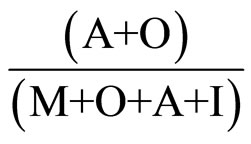 (3)
(3)
Dissatisfaction index (DI) = 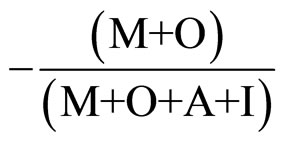 (4)
(4)
The value of satisfaction indexes varies between 0 and 1. The closer the value is to 1, the higher the influence on customer satisfaction if the specific product feature is fulfilled. Likewise, the negative customer satisfaction coefficient (dissatisfaction index) is valued from –1 to 0. The closer the value is to –1, the stronger the influence on customer dissatisfaction if this feature is not fulfilled [9].
The important parameters of different Kano category are utilized to adjust the traditional improvement ratio IR0 that is used in traditional QFD method. This adjusted improvement ratio IR* can be obtain through Function (5) below:
 (5)
(5)
where  and n is the value of different Kano category. The value of n is 0, 0.5, 1 and1.5 for indifferent, must-be, one-dimensional and attractive requirements, respectively [7]. In previous literatures, Kano parameter for indifferent requirements is often ignored. However, Kano [10] has pointed out that indifferent requirements can turn into attractive requirements in a life cycle so they cannot be totally neglected. Because modern customer’s demand is emphasis on innovation, mustbe requirements alone cannot make a competitively better product. Thus, attractive requirements are given more weight.
and n is the value of different Kano category. The value of n is 0, 0.5, 1 and1.5 for indifferent, must-be, one-dimensional and attractive requirements, respectively [7]. In previous literatures, Kano parameter for indifferent requirements is often ignored. However, Kano [10] has pointed out that indifferent requirements can turn into attractive requirements in a life cycle so they cannot be totally neglected. Because modern customer’s demand is emphasis on innovation, mustbe requirements alone cannot make a competitively better product. Thus, attractive requirements are given more weight.
Similar as the traditional final relative weight (function (2)), the final relative importance is the multiplication of adjusted improvement ratio (IR*) with the customer-stated importance (CR).
4.2. The Model of Kano-QFD Module Selection Approach
The model of proposed module selection approach is described in Figure 1.
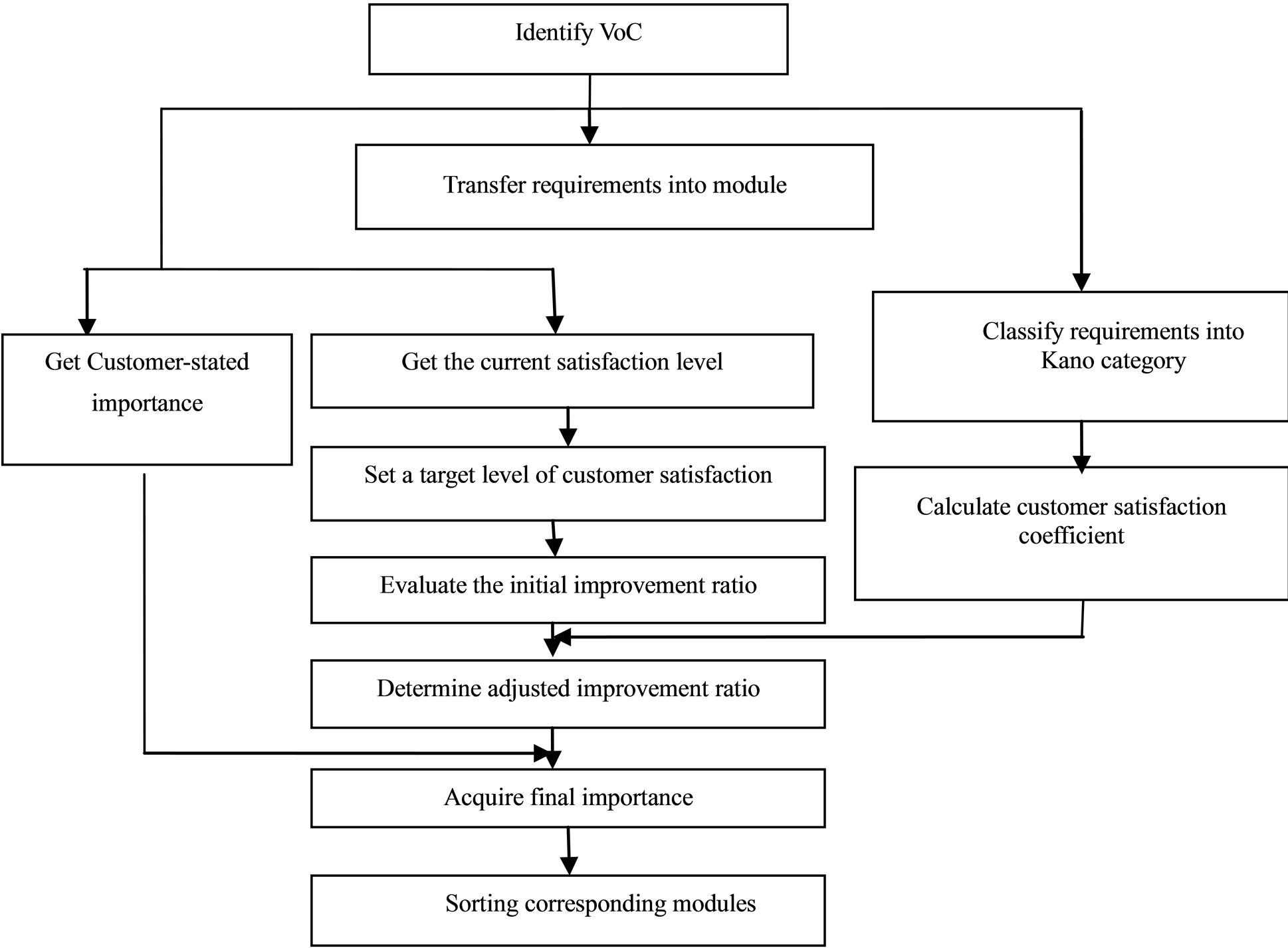
Figure 1. Model of proposed module selection approach.
Derived from customer investigation, the Voice of Customer obtained. In accordance with the acquired customer needs, the modules (M1, M2, ··· , Mi , ··· , Mn) can be select primarily to accomplish all possible customer demands. Afterwards, a second investigation will be implemented to get the current customer satisfaction level of each requirement, the initial data of importance of each requirement (customer-stated importance) and gather customer response on a modified Kano questionnaire. The requirements are classified into different Kano categories.
Based on competitive analysis, the manufacturer will set a target level of customer satisfaction of each requirement and the initial improvement ration can then be calculated. Thereafter, the final importance of each requirement is determined after getting adjusted improvement ration. Then, the modules are sequenced in accordance with the importance of corresponding requirements. Therefore, the numbers of modules should be chosen into real manufacturing process according to priority.
5. Case Study
A case example is presented here to illustrate how the Kano model can be integrated into QFD to select the most proper modules by using proposed approach. The method is applied for developing an improvement of one SUV in an automobile manufacturer.
After careful information gathering and suggestions from current customers, 11 requirements are decided for “a good SUV”. Then, the relative modules that should be added, improved or innovated to fulfil corresponding requirements are determined and illustrated in Table 1.
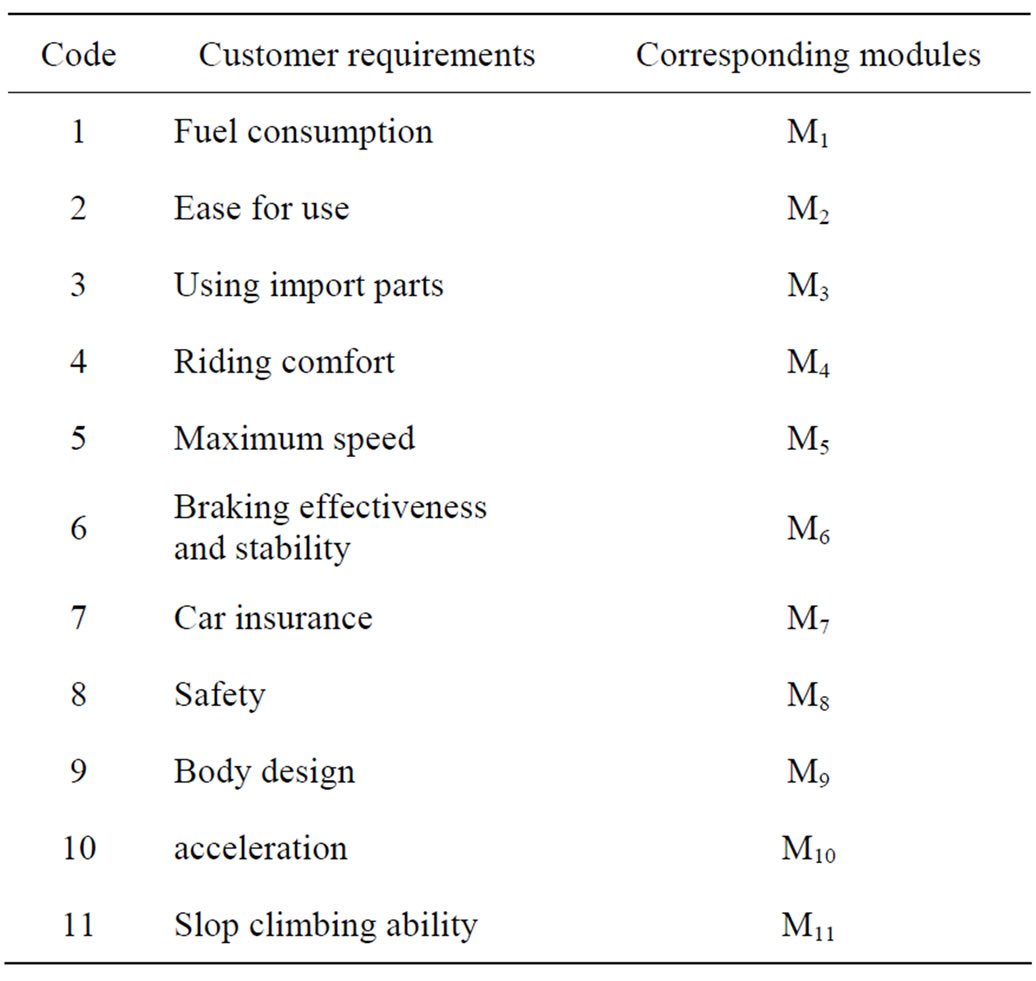
Table 1. Customer requirements and corresponding modules.
A modified questionnaire for each requirement is asked to customers [9]. After accessing the result of questionnaires by using the evaluation table of Lee and Newcomb [11], frequency of different categories for each requirement is found and customer satisfaction coefficient SI and DI are calculated by using functions (3) and (4). Kano categories are then decided according to SI, DI value of each requirement and the results are shown in Table 2.
Customers are asked to rate the importance of particular to give requirement customer-stated importance. The rating is on a 1-5 scale where 1 is for minimum importance and 5 for maximum importance. The final customer-stated importance value for each requirement is the average of all customer ratings. Afterwards, a quantitative research is conducted to evaluate the competitive position of the product in terms of customer satisfaction. Based on the competitive analysis, the current customer satisfaction level and the target customer satisfaction level are set for each requirement. This value is also rating from 1 to 5. According to Function (1), the initial improvement ratio for each requirement is evaluated by traditional QFD method and given in Table 3. In the proposed approach, after considering the value of different Kano category and satisfaction and dissatisfaction index values, the initial improvement ratio is adjusted with function (5). Then, the final relative importance can be calculated by using function (2) in QFD method. Table 3 shows adjusted improvement ratio and final importance of requirement. In Table 3 the code is used to replace the full name of customer requirements for the reason of space of a whole page.
From Table 3, it is clearly that the modules must-be requirements have higher customer-stated importance
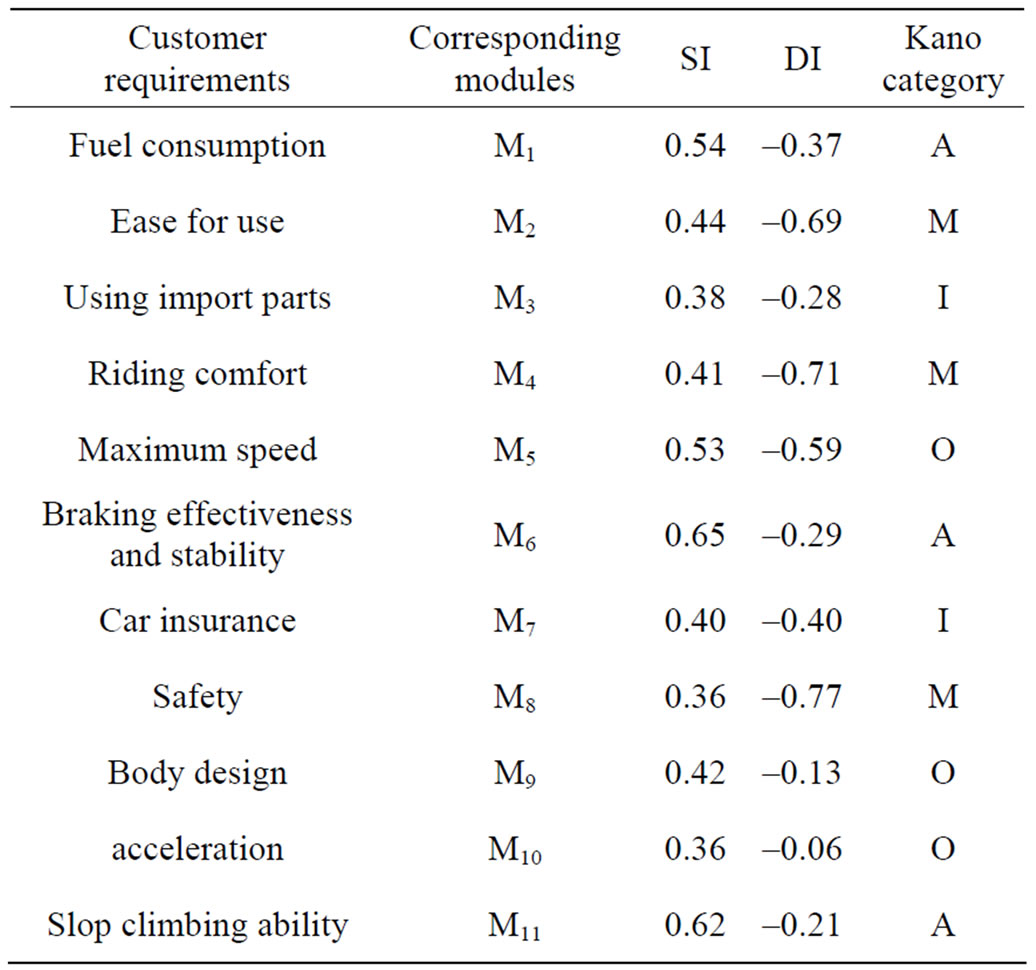
Table 2. SI, DI and Kano category of requirements.
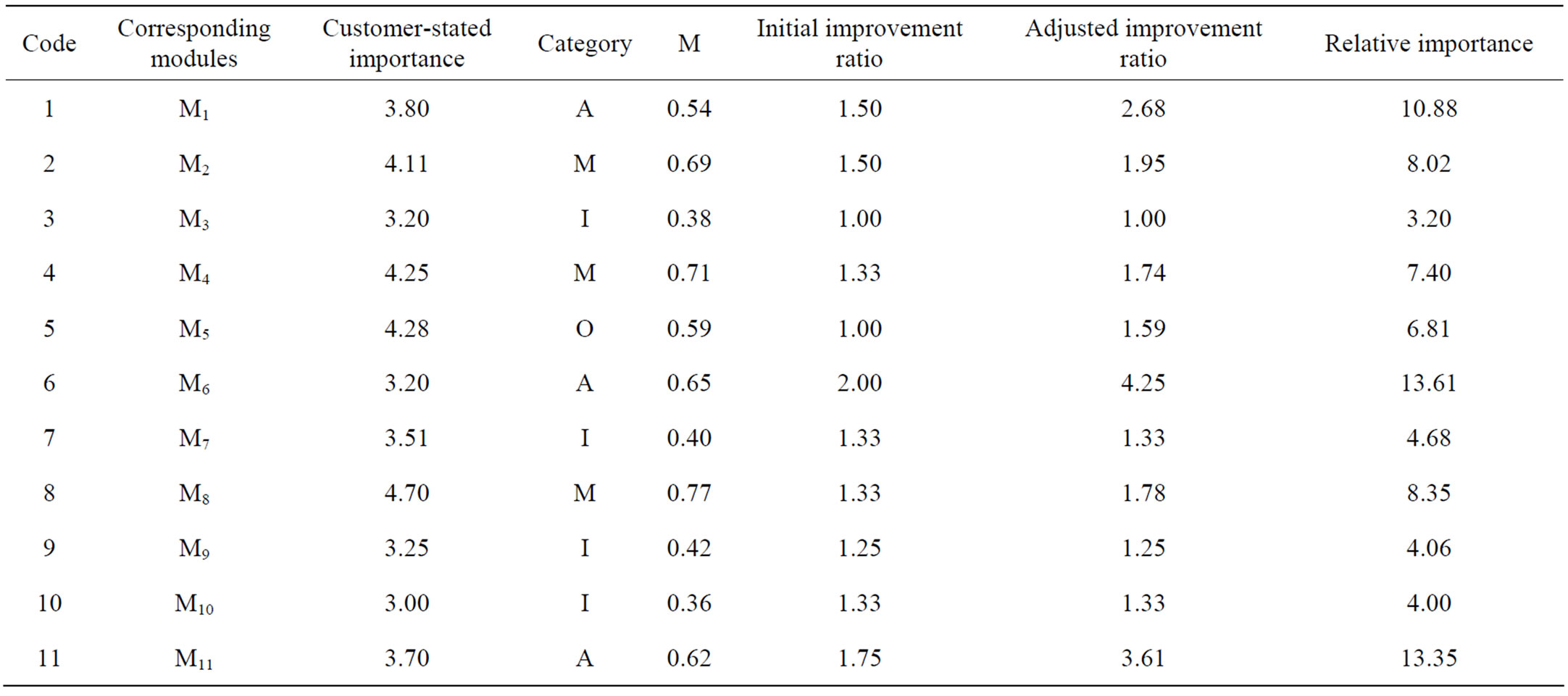
Table 3. Relative importance result with proposed method.
than any others, which depicts that customers give higher weight to them if asked directly as they usually express must-be requirements strongly. It can also be seen clearly that even when using the proposed method, the customerstated importance for must-be requirements has significantly less final importance.
Meanwhile, from the result of Table 3, it is easy to make the decision on which modules should be chosen to the following design and manufacturing process with the maximum customer satisfaction. The choosing sequence is M6-M11-M1-M8-M2-M4-M5-M7-M9-M10-M3. Consistent with the cost limitation, the manufacturer choose to improve and innovate the modules M6, M11 and M1 for the new product.
6. Conclusion
The module selection is the first and crucial step for using modular technology. The approach presented in this paper provides a new methodology for solving module selection problem in manufacturing industry. The proposed integration method of the Kano model with QFD provides a method for organizations to choose the most proper modules in product development process. This new method successfully prioritizes the module importance to help product designers to decide the particular modules that should be chosen to be implemented in the design process. The major limitation of this study is that it may not be able to apply this approach on a totally new product which has never been introduced in the market. In such conditions, customers will be unaware with different aspects of product and survey results will be irrelevant. Besides, product and development costs of each module are not considered in this research. The cost may greatly affect the overall satisfaction of customers. A cost model may be involved in further research.
7. Acknowledgements
Supported by 2012 Soft Science Project of Henan Provincial Science & Technology Department (Project Number: 122400450223):
REFERENCES
- A. S. Yigit and A. Allahverdi, “Optimal Selection of Module Instance for Modular Products in Reconfigurable Manufacturing System,” International Journal of Production Research, Vol. 41, No. 17, 2003, pp. 4063-4074. doi:10.1080/0020754031000149220
- M. M. Tseng and J. Jiao, “Mass customization, Hand book of Industrial Engineering,” 3rd Edition, Wiley, New York, 2001.
- L. P. Sullivan, “Quality Function Development,” Quality Program, Vol. 34, No. 6, 1986, pp. 39-50.
- G. Tontini, “Integrating the Kano model and QFD for Designing New Products,” Total Quality Management & Business Excellence, Vol. 18, No. 6, 2007, pp. 599-612. doi:10.1080/14783360701349351
- K. Matzler and H. H. Hinterhuber, “How to Make Product Development Projects More Successful by integrating Kano’s model of Customer Satisfaction into Quality Function Development,” Technovation, Vol. 18, No. 1, 1998, pp. 25-38. doi:10.1016/S0166-4972(97)00072-2
- K. C. Tan and X. X. Shen, “Integrating Kano’s model in the Planning Matrix of Quality Function Deployment,” Total Quality Management, Vol. 11, No. 8, 2000, pp. 1141-1151. doi:10.1080/095441200440395
- G. Tontini, “Develop of Customer Needs in the QFD using a modified Kano model,” Journal of the Academy of Business and Economics, 2003.
- C. Berger, R. Blauth, D. Borger, C. Bolster, G. Burchill, W. DuMouchel, F. Pouliot, R. Richter, A. Rubinoff, D. Shen and M. Timko, “Walden Kano’s methods for understanding Customer-Defined Quality,” Quality Management Journal, Vol. 2, No. 4, 1993, pp. 2-36.
- E. Sauerwein, F. Bailom, K. Matzler and H. H. Hinterhuber, “The Kano model: How to Delight Your Customers,” International Working Seminar on Production Economics, Innsbruck, 19-23 February 1996, pp. 313-327.
- N. Kano, “Life Cycle and creation of Attractive Quality,” Proceeding of the 4th International QMOD Conference Quality Management and Organizational Development, Linköping, 12-14 September 2001.
- M. C. Lee and J. F. Newcomb, “Applying the Kano methodology to Meet Customer Requirements NASA’s Microgravity Science Program,” Quality Management Journal, Vol. 4, No. 3, 1997, pp. 95-110.

